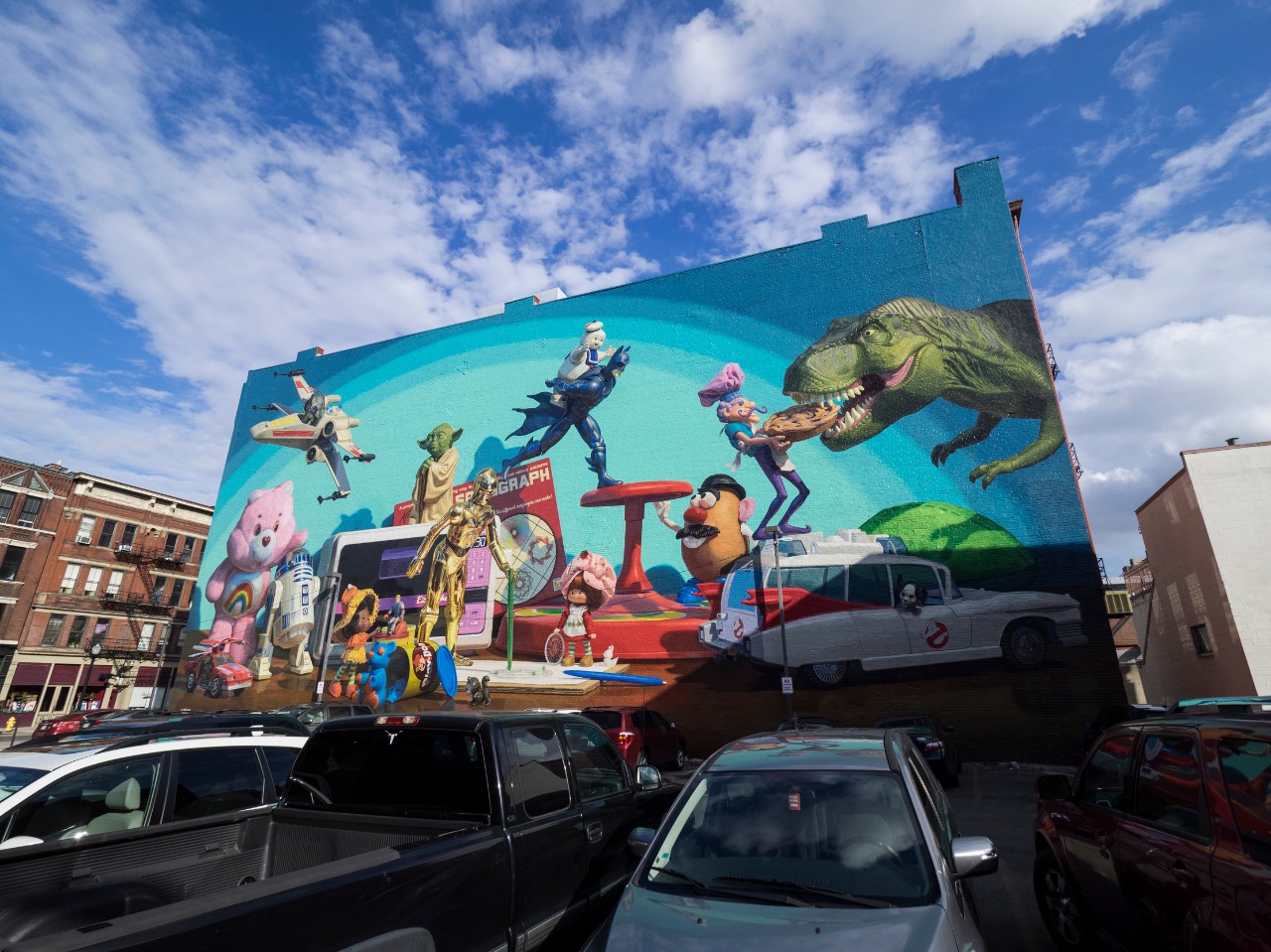
With NEA grant, UC researcher looks at public art in different light
Urban design researcher to study whether public art enhances a city’s vitality and commerce
University of Cincinnati urban design researcher Hyesun Jeong has received a grant from the National Endowment for the Arts (NEA) to determine how public art relates to street vitality and the growth of commercial business in multiple U.S. cities.
Researchers will be looking at the relationship between the arts and commerce using data analysis of five U.S cities, including Cincinnati, says Jeong, an assistant professor in UC’s School of Planning within the College of Design, Architecture, Art, and Planning (DAAP), who is leading the project as a principal investigator.

Hyesun Jeong on the steps next to Palais de Tokyo museum in Paris, France where she conducted research and worked in the architectural profession. Photo/provided.
This NEA project expands the boundary of a prior study on public murals and foot traffic in Cincinnati, which received the Faculty Scholars Research Award by UC’s University Research Council in 2023.
Using pedestrian database StreetLight Data as well as socioeconomics and spatial data, the study found that the quality of the urban context of murals, such as the density of housing and retail, is significantly associated with foot traffic. Jeong found that the average weekend foot traffic in the areas having murals is 30% higher than the city’s average weekend foot traffic.
“Certain types (and numbers) of commercial amenities synergize more with murals on bringing in foot traffic,” Jeong explains. “For example, when these murals are surrounded by 10 different food-serving amenities in the same area, such as restaurants, bars and cafes, the weekend foot traffic becomes even higher, nearly five times greater than the city average.”
Further, Jeong notes that while crime has increased between 2010 and 2020 in most areas of Cincinnati, violent crime has decreased 28% in the areas, including the Over-the-Rhine, where murals are surrounded by mixed-use properties and a housing density at 10 units per acre or more.

Photo/J. Miles Wolf courtesy of ArtWorks
As part of Jeong’s team, second-year graduate student Yajie Hu adds, “Public art is receiving more and more attention on the urban planning agenda, and I am curious about the interaction of street art types with community commerce models.” Hu says the experience as a research assistant on a prestigious NEA grant is a prime example of how DAAP provides graduate students with hands-on learning experiences.
The new study, Jeong says, will seek to find the economic impact of the arts on different types of commercial business and pedestrian traffic. Her hypothesis, based on the mural research and prior urban design research, is that public art — which includes murals, sculptures, museums, performing theaters and the like — enhances both vitality and commerce where it is located.
I am truly honored and grateful to get this national research award
Hyesun Jeong Assistant professor in UC’s School of Planning

2023 UC alumni mural in Over-the-Rhine. Photo/UC Alumni Association
For example, one of Jeong’s earlier research projects was the impact of cafe culture. That research found that if cafes and coffee shops are surrounded by a specific cultural setting of the neighborhood, such as bohemian amenities like tattoo parlors, performing theaters or used bookstores, they tend to attract more artists compared to cafes downtown. Her other studies also found that these arts and bohemian cultural amenities significantly relate to cycling in multiple U.S. cities, all else being equal.
The NEA grant will also allow the author to collaborate with an architect (Hammersley Architecture of Chicago) and an art organization (ArtWorks Cincinnati) on creating a design proposal that incorporates adaptive reuse of retail space for accommodating art and cultural activities to help grow local businesses.
“I am truly honored and grateful to get this national research award from NEA,” Jeong says.
“[This award] provides an opportunity for not only studying the socioeconomic impact of the arts but also creating a meaningful platform where I can work with the arts organizations, architects, planners and policymakers to draw local and national impacts through joining research and design,” she says.
Featured image at top: Mural in downtown Cincinnati featuring Hasbro toys. Photo/Jay Yocis/UC Marketing + Brand

Photo of mural in Covington, Kentucky/Lisa Britton/UC Marketing + Brand
Impact Lives Here
The University of Cincinnati is leading public urban universities into a new era of innovation and impact. Our faculty, staff and students are saving lives, changing outcomes and bending the future in our city's direction. Next Lives Here.
Related Stories
How to spot a fake
December 6, 2022
University of Cincinnati chemists, geologists and art historians are collaborating to help area art museums answer questions about masterpieces and detect fakes — and teaching students about their methods.
UC welcomes record-breaking student body
August 26, 2024
The University of Cincinnati anticipates record enrollment as classes begin Monday, Aug. 26, with a projected 52,000 students — a 2.1% increase over last year. Growth continues but is more strategic with the university attracting more online learners, a greater number of transfer and first-generation students along with a stronger student presence on regional campuses at Blue Ash and Clermont.
President Pinto's end-of-year message to UC community
December 15, 2022
University of Cincinnati President Neville Pinto's message to end 2022 includes a celebration of the top news, video, research and giving from the year.
